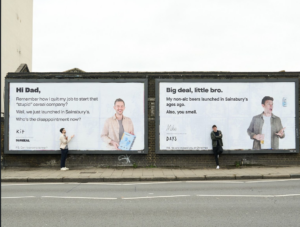
New B2B Marketing Strategy Challenges Signal VS Noise Theory
Signal vs. Noise is a never-ending discussion inside businesses’ high ceilings. But what if B2B marketing strategy flips the table and brings the most unexpected collaboration?
If you are a B2B marketer, measuring Signals and Noises against each other is what we have witnessed for a long time. This may be the time for a change.
You don’t need to treat Noise as useless. Many successful B2B businesses leverage it strategically when combined with Signal. The key is not to eliminate Noise but to distill and harness it for pattern recognition, early cues, and creativity.
We are discussing mixing Signal with Noise while the world out here is spinning stories, defining the downside. Let’s dive deep into the b2b marketing strategy where Noise and Signal go hand-in-hand.
Signal for precision in the B2B marketing strategy of brands
Signal is what helps B2B marketers act with confidence. It’s validated, data-backed information about what works. B2B marketing strategy requires direction and no-nonsense guesswork that connects with business outcomes like pipeline, revenue, and retention.
What does Signal tell you? You ICP (ideal customer profile) status, conversion point, content resonance, and pain points.
Take a product manager, for example. He is from a mid-size SaaS firm, downloads your pricing sheet, and revisits the case study page twice. That’s a signal worth prioritizing.
After ICP, content resonance and conversion are significant determinants. Not all content performs equally. Signal shows you which pieces move people through the funnel. That means tracking the whitepapers that lead to demo bookings, webinars that generate SQLs, or LinkedIn posts that push traffic to product pages.
Signal also emerges from A/B tests, email subject lines, landing page copy, and ad creative. Which phrases or value propositions get more clicks, replies, or time-on-page?
The last one signals businesses’ pain points. If 40% of churned clients cite confusing onboarding, that’s a clear product-marketing signal to fix both the experience and the narrative.
Signal is often hidden in customer calls, surveys, or support tickets. If multiple enterprise clients mention onboarding friction or integration issues, that’s an urgent need.
Now, here comes the next part of the sync method. Noise.
Noise reveals unfiltered, raw, and hidden behaviors
Not everything noisy is a distraction. Sometimes, it’s an opportunity to build something new. Noise adds depth to strategy by showing outliers, trends in the making, and surprising user behavior.
Not all trends start loud. Noise contains early indicators of change, like an uptick in interest from a new industry or a small but vocal group using your product differently. You may think of that as an opportunity rather than a useless conundrum.
Often, B2B segments follow hard-core principles while fishing for buyers. Buyers are not monoliths. They are not always on Google, searching for SaaS companies. More buyers start researching on Reddit or TikTok.
Noise captures buyer behaviors that don’t fit the mold — irregular buying journeys, unstructured feedback, or unexpected touchpoints.
Instead of fighting Noise, B2B businesses can use it to sharpen their Signal.
Signal and Noise can work in sync in B2B
In B2B, growth isn’t just about finding clarity (Signal) or sifting through chaos (Noise). It’s about knowing when to zoom in, when to listen wide, and how to use both to move the numbers.
Let me present 2 definitive case studies of brands that trust Noise and sync with signals to achieve an edge in the market.
Gong – Turning social Noise into market leadership
Gong, a revenue intelligence platform, made headlines in the B2B space with its radically different content and brand voice. While most competitors stuck to “safe” playbooks, Gong leaned into Noise—publishing meme-style LinkedIn posts, jumping into sales rep conversations on Reddit, and putting out opinionated newsletters that weren’t always polished but always got noticed.
The buzz generated much Noise. Not everyone was an ICP, and not every viral moment was relevant. But Gong’s marketing team treated this attention as a lab.
They watched what content made people argue, not just click. Then, they synced that Noise with real signals—product demo requests, trial sign-ups, and account progression rates—to understand which bold moves were loud and effective.
Their bold strategy paid off. In March, Gong surpassed $300M in ARR (annualized recurring revenue), became a category leader, and was named among LinkedIn’s Top Startups multiple times.
Surreal – Mesmerizing corporate leaders without a relevant product
Surreal is another example of a brand that works on Noise, gets enough attention and engagement, and achieves higher market growth.

Itis a UK-based cereal brand that dominates LinkedIn’s corporate feed with its dry humor and cheeky posts.
It has gathered attention from all over the world without breaking a sweat. However, the interesting point is that these people are not the brand’s relevant customers. Yet, these professionals are making Surreal famous in the market.
Sales teams read signals. Marketing listens to Noise
Together, they close.
In most organizations, salespeople chase clear signals—high-intent behaviors, warm leads, and strong firmographics. Meanwhile, marketers soak up noisy environments like industry chatter, Reddit threads, and low-engagement feedback. The best B2B brands run both in parallel: Signal keeps the engine running, while Noise keeps the creativity alive.
If both teams sync their findings, they get a richer buyer context and sharper messaging, making the close much easier.
Cut to the chase
Noise isn’t the villain. In a B2B marketing strategy, it’s often the whisper before the trend. Brands that learn to interpret both rather than choosing one grow faster, move earlier, and adapt better.

